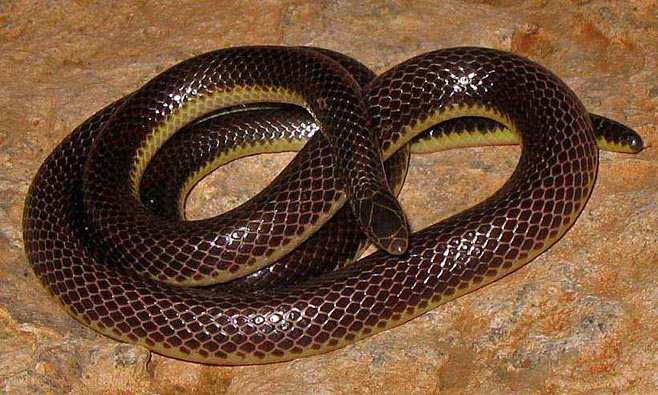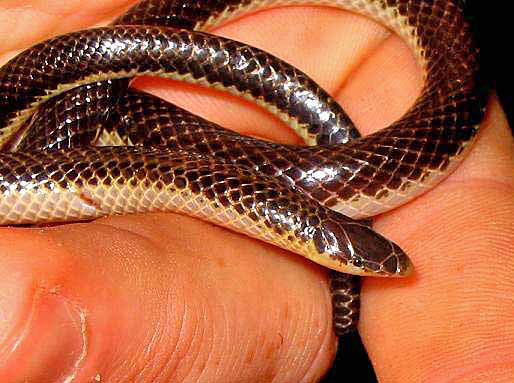|
Xenocalamus bicolour (Bicoloured quill-snouted snake)
Tweekleurspitsneusslang; Tweekleurskerpneusslang [Afrikaans]
Life >
Eukaryotes
>
Opisthokonta >
Metazoa
(animals) > Bilateria > Deuterostomia >
Chordata >
Craniata > Vertebrata (vertebrates) > Gnathostomata (jawed vertebrates) >
Teleostomi (teleost fish) > Osteichthyes (bony fish) > Class:
Sarcopterygii (lobe-finned fish) > Stegocephalia (terrestrial vertebrates) >
Tetrapoda
(four-legged vertebrates) > Reptiliomorpha > Amniota >
Reptilia (reptiles) >
Romeriida > Diapsida > Lepidosauromorpha > Lepidosauria >
Squamata > Serpentes
(snakes) > Family: Atractaspididae > Genus:
Xenocalamus
 |
|
Xenocalamus bicolour (Bicoloured quill-snouted snake),
Northern Cape. [photo D. Maguire ©, from
SARCA
Virtual Museum] |
 |
|
|
Xenocalamus bicolour (Bicoloured quill-snouted snake),
Free State. [photo D. Maguire ©, from
SARCA
Virtual Museum] |
|
Identification
The Bicoloured Quill-snouted snake can be identified by its
quill shaped head, its small eyes, variable colouration and its nocturnal
lifestyle. It grows to an average length of 50 cm and a maximum length of 72 cm.
Distribution and habitat
This snakes distribution includes the Free State, North
West, Botswana, Namibia and northern Zimbabwe. Its favoured habitat is alluvial
sand in moist savanna, arid savanna and karoo scrub.
Food
Eats burrowing skinks and worm lizards.
Predators, parasites and disease
Eaten by other snakes.
Reproduction
Oviparous (egg-laying), lays between 3 and 4 eggs in
summer.
Longevity
Medical importance
Although venomous is no threat to man.
Links
References
-
Broadley, D.G. 1983. FitzSimons' Snakes of Southern
Africa. Delta Books, Johannesburg.
-
Marais, J. 2004. A Complete Guide to Snakes of Southern Africa.
Struik Publishing, Cape Town.
|
